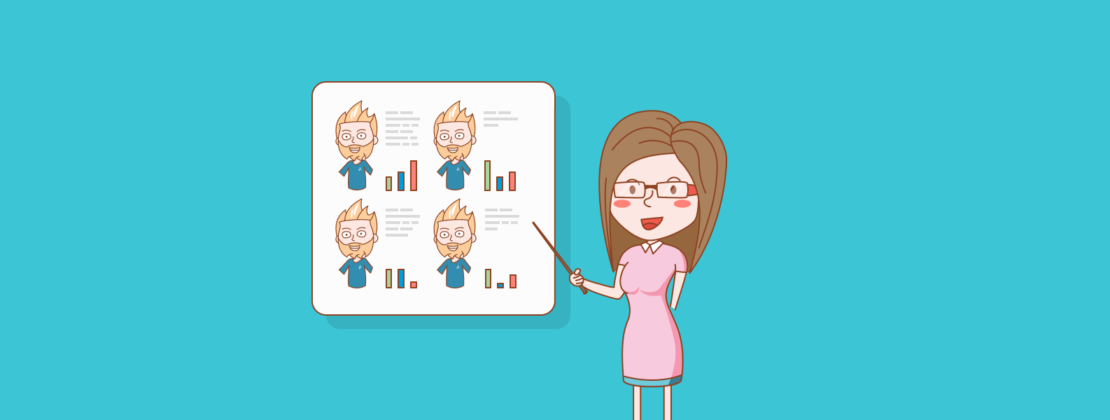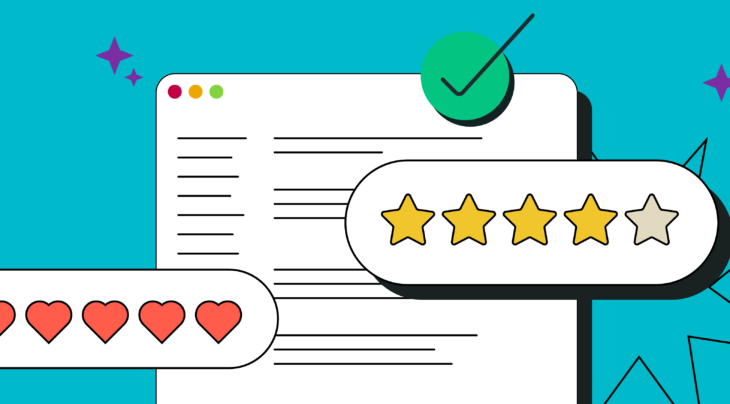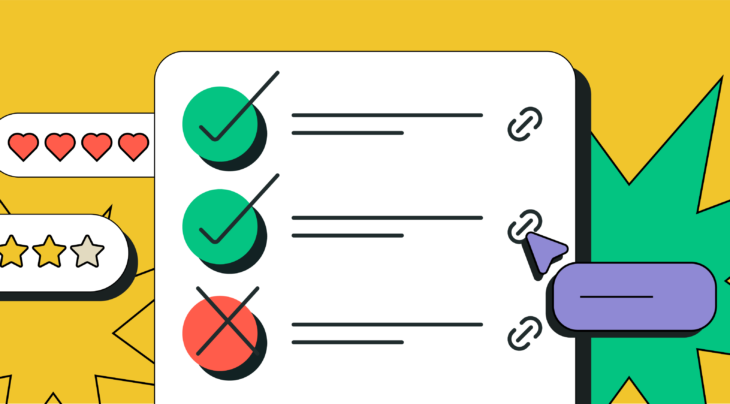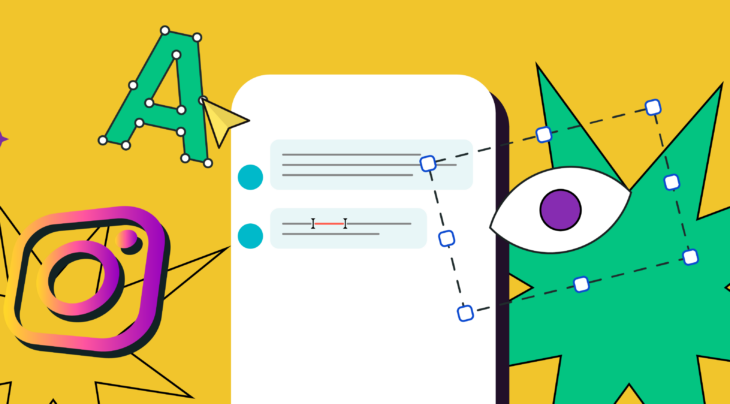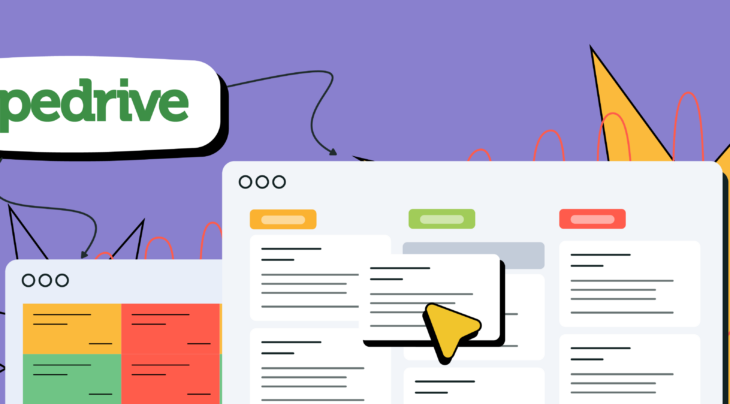A data-driven approach to marketing allows businesses to deliver more relevant offers to their audience, be more productive, and, as a result, stay ahead of their competitors. In this article, we’ll talk about some of the best ways to collect customer data, its value for businesses, and how to use this data in your email campaigns.
- Why is it crucial to collect customer data?
- More communication channels to promote your products
- More accurate customer base segmentation
- Personalized marketing communication
- Increased customer lifetime value
- Which customer data should you collect?
- Identity data
- Descriptive data
- Quantitative data
- Qualitative data
- How to collect customer data
- Ask your customers
- Email subscription form
- Chatbot
- Checkout form
- Surveys
- Track your customers’ behavior using analytics tools
- Check the company’s records and social media
- Review email service reports
- How to collect customer data without scaring off prospects
- Offer users a perk in exchange for customer data
- Simply ask users to confirm their data
- Let users subscribe to a certain category of emails
- Only ask for the customer data that you need
- How to use customer data in emails
- Relevant offers
- Personal reminder
- Personal statistics
- To sum it up
Why is it crucial to collect customer data?
Collecting customer data requires human resources, time, storage, and more. However, it is vital for a business to gather customer data, and here’s why.
More communication channels to promote your products
If you have a customer’s email address, you can add them to your mailing list and follow up with them about your special offers and news via email.
If you have a customer’s email address and phone number, you can combine email with SMS marketing. SendPulse allows you to follow the latest trends and shift your focus to multichannel marketing — for example, by setting up an automated series of messages using email campaigns, SMS, and push notifications, or creating and launching Facebook chatbots.
More accurate customer base segmentation
The more you know about your target audience — their preferences, interests, and behavior — the better you can segment your contacts to target them with the most relevant and enticing offers.
Segmentation in contextual advertising helps marketers increase conversions as their offers become more precisely targeted. As for email marketing, segmentation helps identify the most engaged subscribers to target for special offers.
Personalized marketing communication
Marketers use customer data when reaching out to existing and potential customers to make their messages more personal. For example, you can address a recipient by name or refer to their hometown. You can also use information about the subscriber’s birthday, anniversary with your company or another specific occasion to send a milestone triggered email.
According to research from Epsilon, 80% of customers are more likely to make a purchase when brands offer personalized experiences.
Increased customer lifetime value
If you analyze your customer’s purchase history, you can spot date-related and product sales trends. This information allows you to predict the right time, to offer the right product, to the right person, motivate repeat purchases, and increase customer loyalty — overall, leading to improved customer lifetime value.
Which customer data should you collect?
The customer data you need fully depends on the type of business you run and the marketing tactics you use. For example, apparel brands need to know their customer’s gender, while auto parts stores are interested in the car model of their prospects.
Let’s look at some different types of customer data that businesses collect to fine-tune their marketing strategies.
Identity data
This category includes any information that allows brands to uniquely identify an individual:
- name, email address, and phone number;
- date of birth, gender;
- location, address;
- social media profiles;
- company’s name, position.
All this data forms the foundation of the customer’s profile.
Descriptive data
The longer customers stay with you, the more personal information you can get from them. To gain a fuller perspective of your customer, you need to gather additional data:
- marital status, number of kids and their age;
- lifestyle and hobbies, pets and their names;
- customers’ needs, expectations, and fears.
If you have this kind of data, it’ll be easier for you to offer additional products and services. For example, a furniture store marketer can offer new parents purchasing a sofa to also take a look at baby cribs.
Quantitative data
This is measurable operational data, that helps you to understand how your customers behave when interacting with your company. This type of data includes information about:
- transactions — type and number of purchased products, total money spent, date of purchase, abandoned carts;
- communication — dates, channels, open and click rate;
- online activity — website visits, click maps, check-ins;
- customer relations — chats with your support team and complaints.
Analyzing quantitative data allows you to improve your customer’s journey to boost conversions further.
Qualitative data
Qualitative data is usually gathered through surveys as it provides information about how customers genuinely feel about your company and products. Such surveys may ask customers to rate the value of your product, say why they purchased it or how likely they are to recommend the product to others, and so on.
How to collect customer data
Let’s discuss some of the best methods for collecting customer data.
Ask your customers
Marketers collect data about their customers by asking them to fill out forms when subscribing to emails, registering for a webinar, or ordering something. Below you’ll find several examples.
Email subscription form
Look at HubSpot’s subscription form:
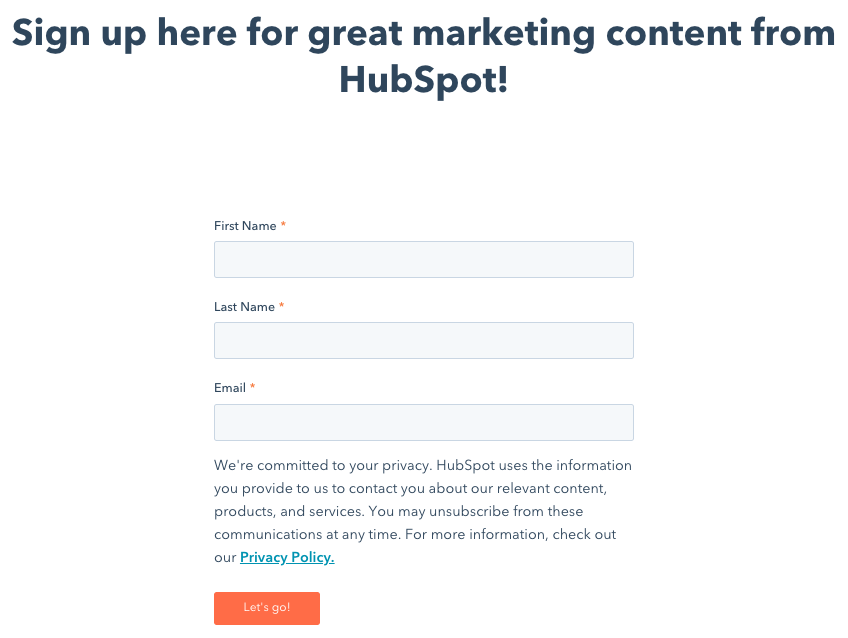
They know that users don’t trust businesses at the first touchpoint, so they are asking visitors for only basic information — name and email address. These simple forms work for a majority of businesses.
Chatbot
Like subscription forms, chatbots can request both basic information such as phone number or email address, and more personal data like a customer’s goals, age, or budget. The trick of this method of collecting data is that chatbots don’t ask many questions at one time, but do it gradually, asking users one question after another.
You can collect customer data through Facebook Chatbots powered by SendPulse. After the first interaction with a customer, the bot captures the customer’s email address and phone number from their profile. Then the chatbot asks the customer to confirm the collected information to add it to your mailing list.
Checkout form
A checkout form is a place where you can collect your customer’s name, email address, phone number, and physical address. Take a look at the example below:
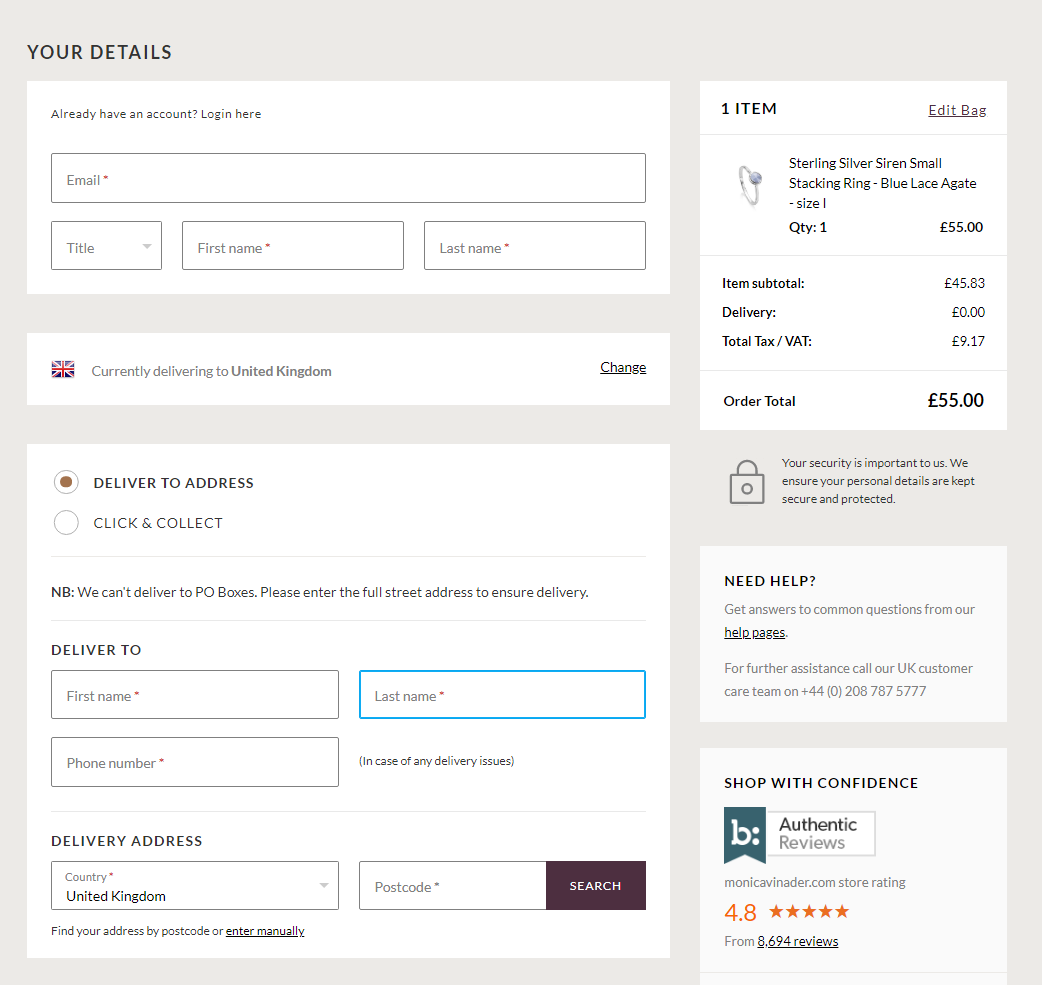
By asking for all this data, the jewelry store is able to further segment their customers by location, send them recommendations or special offers based on their recent purchases, or contact them via email to ask for feedback.
Surveys
A survey is the best way to collect additional customer data. Look how The New York Times does it with their survey email:
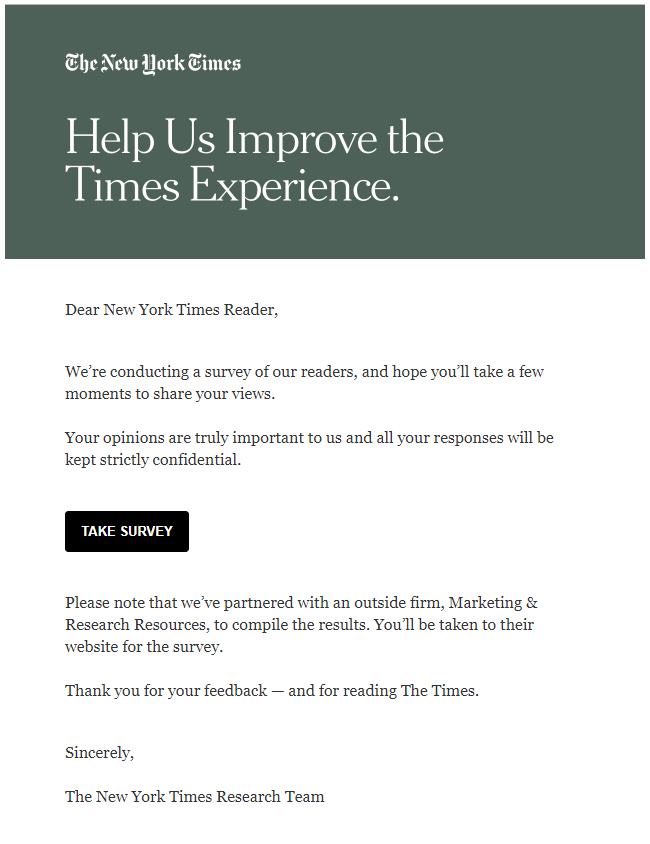
The survey itself includes questions related not only to the customer’s identity but also to descriptive data:
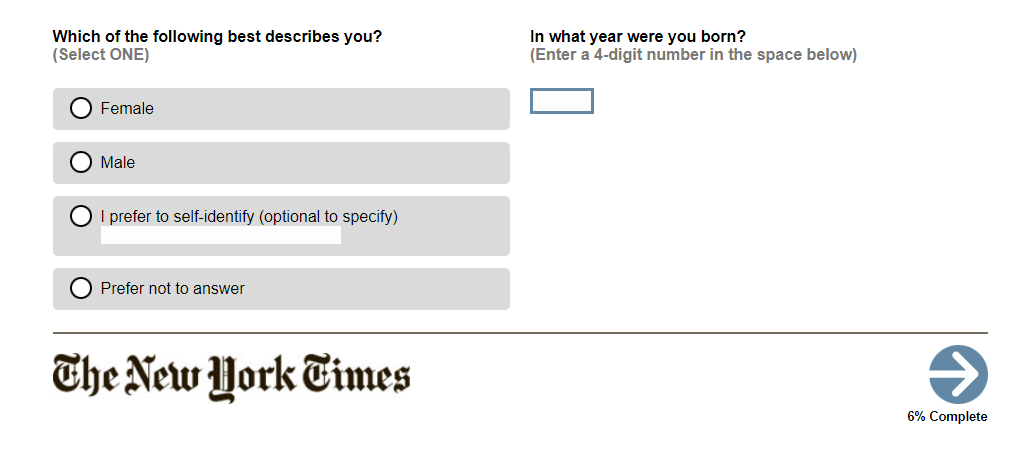
Track your customers’ behavior using analytics tools
Analytics tools such as Google Analytics help uncover the behavior of your customers while they are on your website. These tools allow you to get insights into the search keywords customers used to find your website, the time they spent on your website, particular pages they browsed, and more.
Besides, you can integrate your CRM with the analytics tool you use so that customer data from the latter is displayed in the CRM’s user profile.
Check the company’s records and social media
Companies can collect customer data from internal sources as well. These sources include customer service and support records, sales reports, or transaction history. Usually, businesses store all of this information in their CRM software.
Social media is another source of data, especially if your customers use Facebook to log in. This way, you get access to their public data: name, email address, phone number, marital status, location, hobbies, and profession.
Review email service reports
Email tracking is another method for collecting customer data. In addition, to open and click rates, you can find out what type of device and operating system was used to read your email.
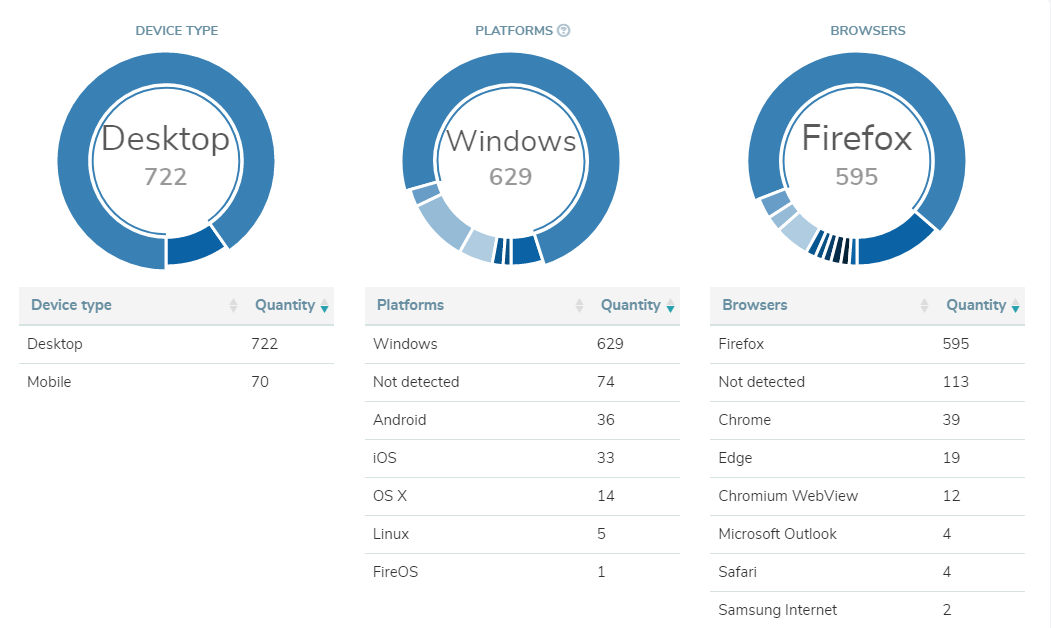
You can also learn where a recipient opened your email.
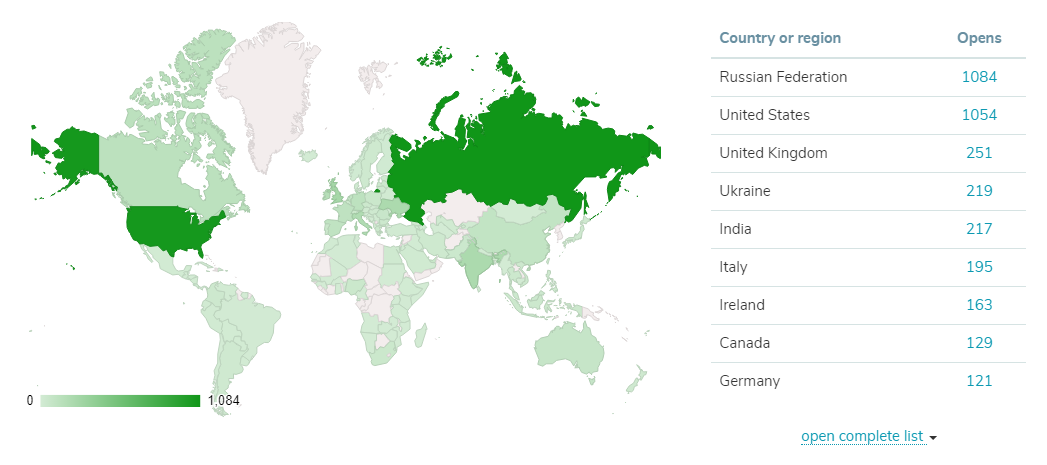
How to collect customer data without scaring off prospects
Usually, users don’t feel like filling out long forms with a bunch of personal questions. They especially don’t like it when companies try to get their data in a persistent or even aggressive manner. We’ve collected some tips on how to gather customer data without being a pest.
Offer users a perk in exchange for customer data
Previously we’ve talked about surveys. It’s a good idea to explain why you need your audience to take a survey. But it’s an even better idea to offer them something in exchange — for instance, a coupon or a chance to win a gift.
Check out the example from ZeroBounce. They don’t ask subscribers to simply volunteer their data; instead, they offer their customers a chance to win a $200 Amazon gift card by providing some qualitative data about themselves.
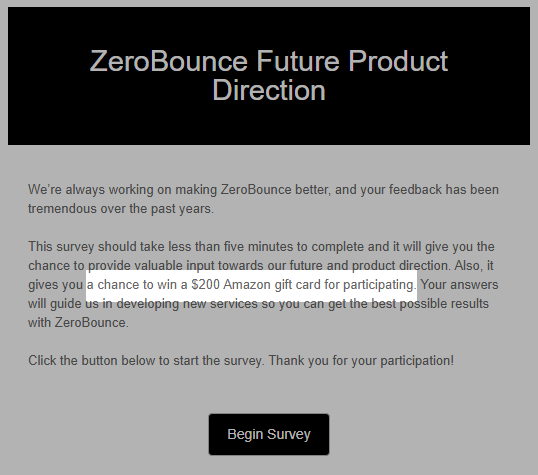
Simply ask users to confirm their data
Some businesses use their users’ IP addresses to extract information about the country and state they’re in. Then companies can ask visitors to confirm their geolocation or allow them to change it, and use this data to target their offers and promote their brand not only online, but offline as well.
Take a look at the example from the Tiffany & Co website. As soon as a visitor enters the company’s website, they can see a top bar asking whether they want to purchase the {user’s country name} site. A user can either confirm their country or choose another location.
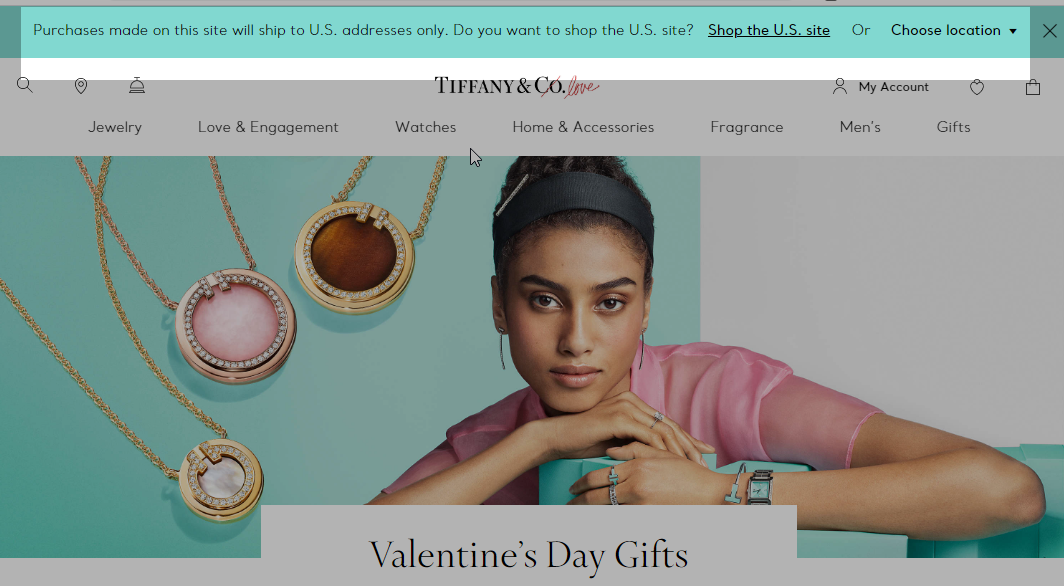
Why is this a good idea? For users, it’s easier to click a button than to fill out a form. And visitors won’t be concerned too much as Tiffany & Co have physical stores and it’s pretty obvious why they request this type of customer data.
Let users subscribe to a certain category of emails
Subscribers want to get relevant offers and don’t want to waste time deciding whether this or that email is valuable for them. One of the ways to fix this is to ask your website’s visitors what kind of emails they want to receive.
For example, on ASOS, subscribers-to-be were provided two options: opt-in for news and offers related to women’s or men’s apparel. As soon as a person fills in the form, their email goes to a certain mailing list.

Such a truly simple form is a go-to option if you want to collect customer data for segmentation.
Only ask for the customer data that you need
Before you ask your customers to share their data, make sure you really need it and you know how to use it. Collecting too much customer data can not only damage conversions but also be a time-consuming process for you and your team.
How to use customer data in emails
According to Ascend2 research, message personalization and list data segmentation are among the top-3 most effective email tactics. Let’s see how to use customer data to enhance your marketing efforts with these tactics.
Relevant offers
Customer data allows you to segment your mailing list. This way, you’ll be able to create relevant offers, and your unsubscribe and spam complaint rates will be at a minimum.
Here are some examples of how segmentation helps you stay relevant:
- a store that sells women’s, men’s, and children’s apparel offers separate email campaigns for each category;
- an online store with physical locations in different cities sends subscribers different offers based on the town they live in;
- pet store owners have various newsletters for cat and dog owners.
Personal reminder
You can use customers’ data to remind a person that the subscription is almost over, and it’s time to upgrade. Remember that recurring payments are a great part of businesses’ revenue.
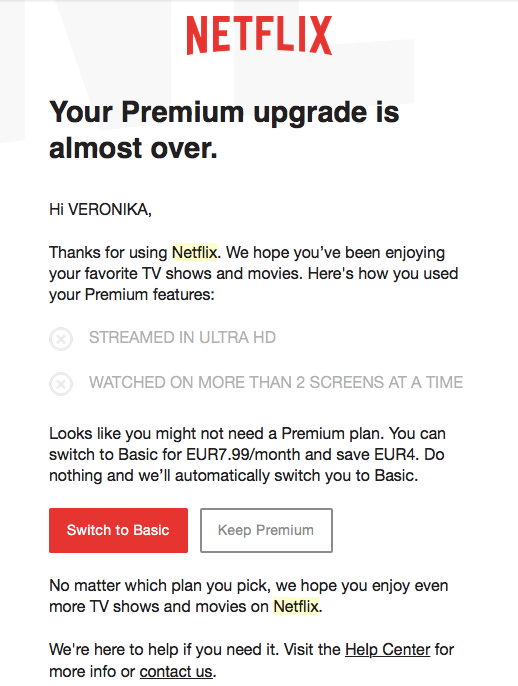
Personal statistics
Users enjoy checking up their own statistics to monitor their progress and fuel their motivation. The example below shows how the power of small wins work — it’s always motivating to see that you’re better than others.
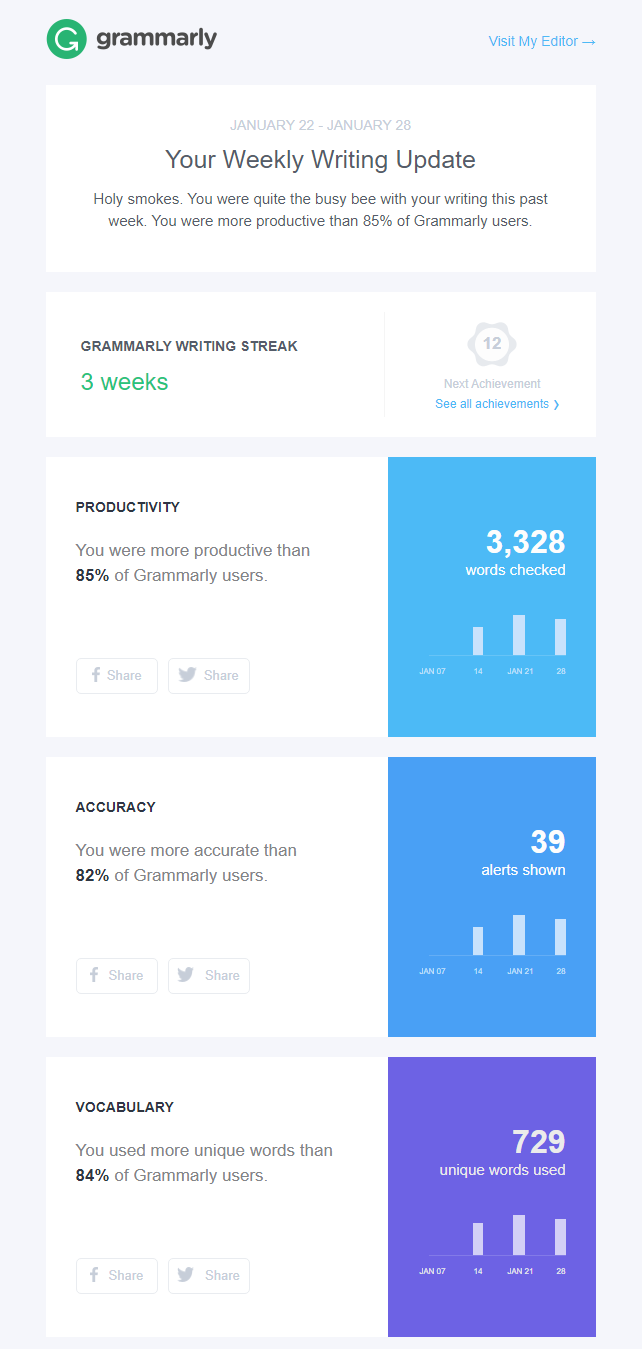
To sum it up
Let’s summarize what you need to remember:
- Collecting customer data allows you to use more communication channels, segment your list, personalize your offers, as well as get more loyal and repeat customers.
- There are four types of customer data you can collect: identity, descriptive, quantitative, and qualitative data.
- The best ways to collect customer data are to ask a person for information when they subscribe to your emails, use a chatbot, sign up or check-out form, and be sure to analyze statistics from your ESP and company reports.
- To motivate your customers to share their data, explain why you need it, offer perks in exchange for it, and make the path easy and quick for them.
- To boost your email performance using customer data, segment your contact list and make relevant offers, send personalized messages based on personal progress or interests.
Register at SendPulse to collect your customer data using subscription forms and Facebook chatbot and to send your timely and relevant offers through various marketing channels!
